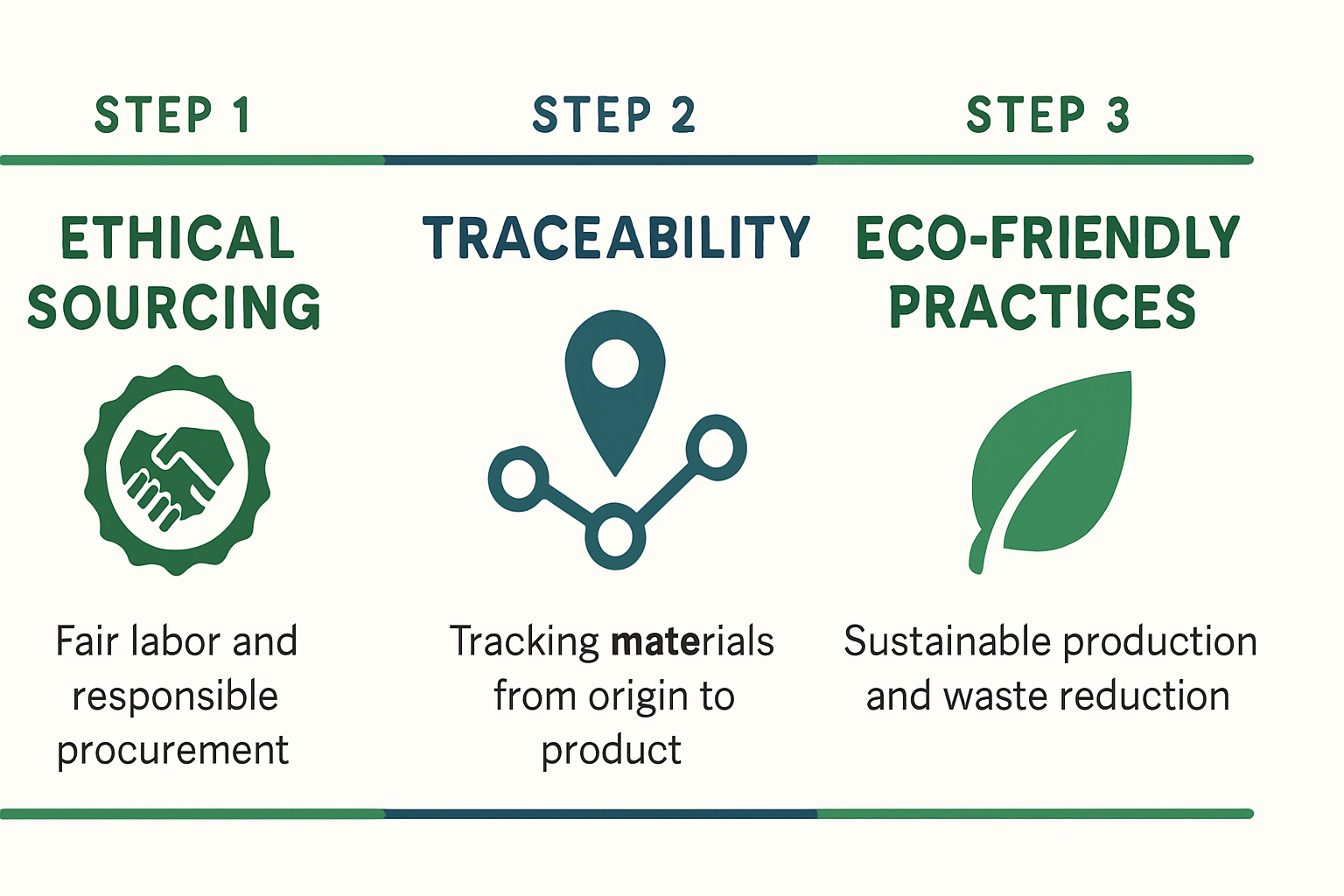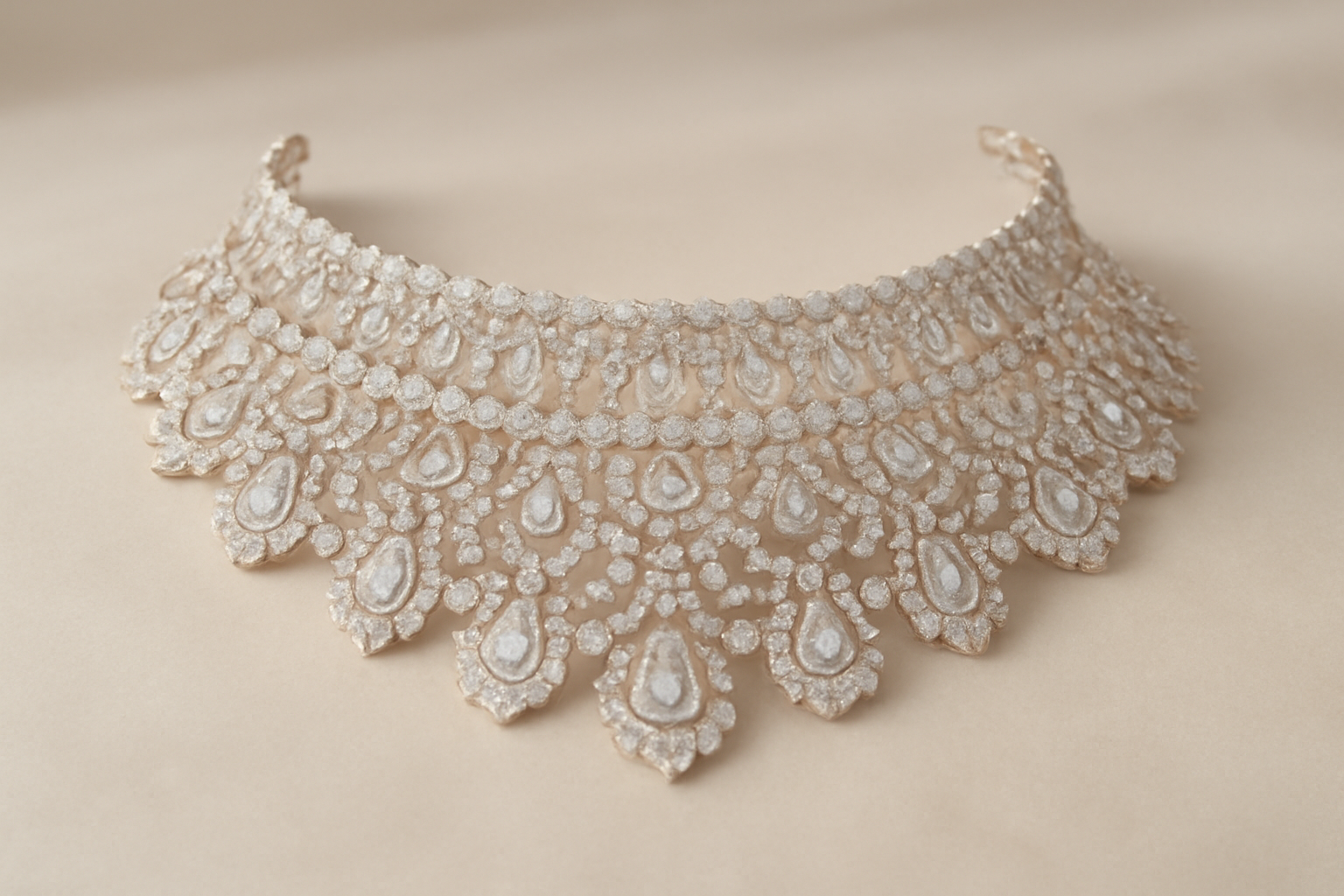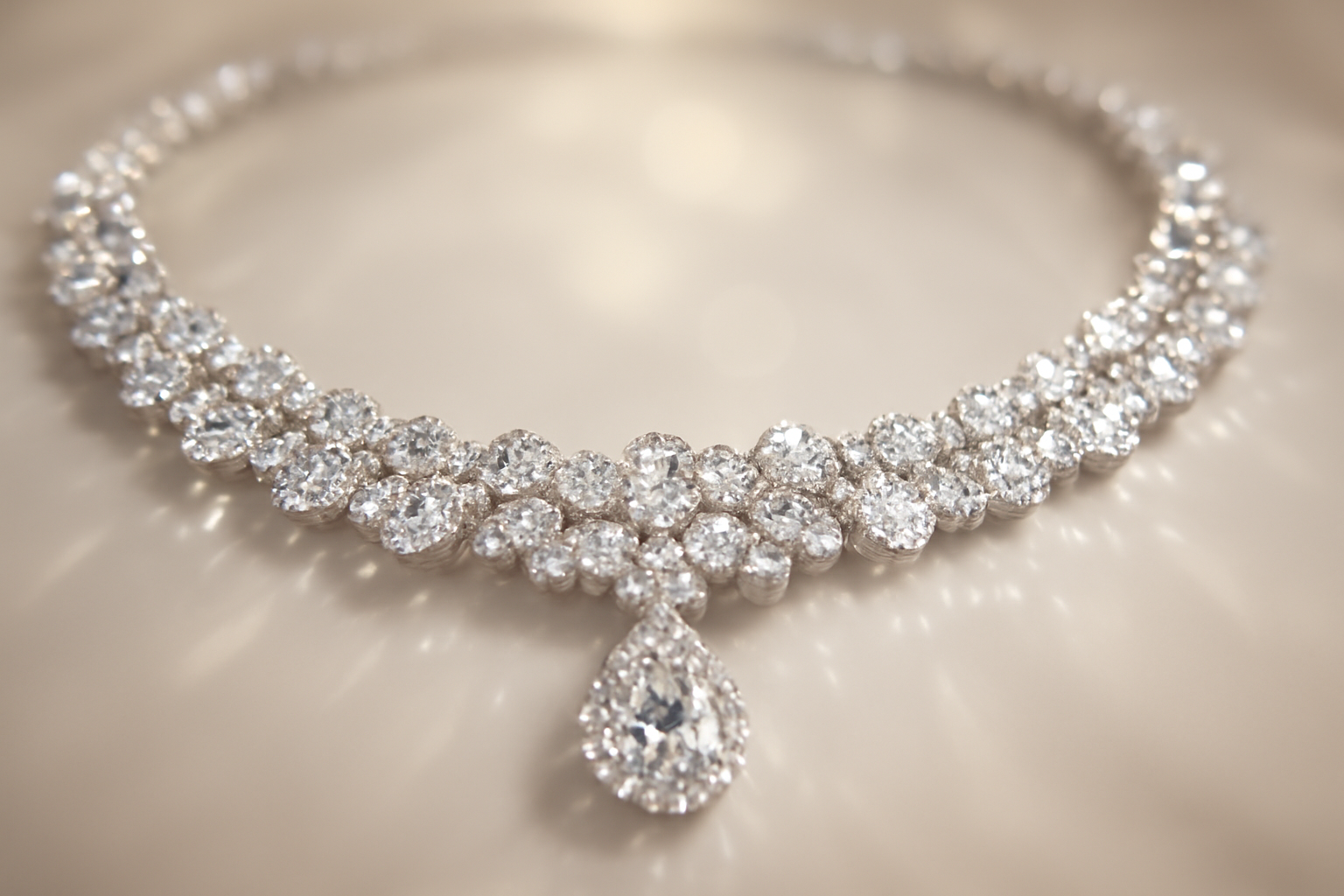Sustainable Jewellery: How We Source Our Diamonds
Discover how sustainable jewellery practices and ethically sourced diamonds are reshaping India’s luxury market with eco-friendly and traceable solutions.
What Is Sustainable Jewellery?
Sustainable jewellery refers to the design, sourcing, and craftsmanship practices that reduce environmental impact while ensuring ethical responsibility. In practical terms, this means sourcing diamonds and precious metals in ways that do not harm the earth or exploit communities. In the Indian context, sustainable jewellery embodies responsible supply chains, eco-friendly production, and transparency in sourcing diamonds.
Key Benefits
- Promotes eco-friendly mining and reduced environmental impact
- Assures customers of conflict-free, ethically sourced diamonds
- Supports fair wages and community development in mining regions
- Enhances brand credibility with conscious luxury buyers
- Ensures long-term trust, transparency, and traceability
How It Works / Steps
Step 1: Ethical Sourcing Partnerships
We work exclusively with diamond suppliers who are certified under global best practices such as the Kimberley Process and Responsible Jewellery Council (RJC). This ensures our diamonds are conflict-free and responsibly mined, aligning with international ethical standards.
Step 2: Supply Chain Transparency
Traceability is central to sustainable jewellery. Each diamond’s journey—from mine to market—is documented to assure customers of its authenticity and ethical background. Blockchain-based traceability solutions are increasingly used in India to verify supply chains.
Step 3: Eco-Friendly Practices
Our sourcing prioritises reduced environmental footprint. From responsible mining practices to reduced energy waste, our process is aligned to limit ecological damage while maintaining natural beauty and brilliance of diamonds.
(Image placeholder)
Expert Tips & Best Practices
- Always check for certification from RJC or Net Zero mining initiatives.
- Choose jewellers who disclose supply chain practices openly.
- Opt for natural diamonds backed by ethical sourcing audits.
- Pair diamonds with recycled gold or platinum for added sustainability.
- Ask for origin details to ensure diamonds are traceable to ethical sources.
Common Mistakes to Avoid
- Buying unverified diamonds without traceability certificates—always ask for documentation.
- Confusing “lab-grown” with “sustainably mined”—natural diamond sourcing can also be sustainable when responsibly managed.
- Overlooking the environmental footprint of jewellery packaging—choose eco-friendly materials.
- Assuming all suppliers adhere to the Kimberley Process—verify their certifications regularly.
Conclusion
At Om Diamond, sustainable jewellery is not just a trend, but a responsibility. By choosing ethically sourced natural diamonds, you are not only embracing timeless beauty but also contributing to a positive global impact. Sustainability builds trust, enhances luxury, and ensures that your jewellery tells a meaningful story of responsibility and legacy.
FAQs
Q1. What is sustainable jewellery in India?
Sustainable jewellery in India refers to ethically sourced diamonds and eco-friendly designs that prioritise environmental responsibility, transparency, and fair labour practices. It ensures conflict-free origins while offering premium luxury pieces with a clear conscience.
Q2. How are sustainable diamonds sourced?
Sustainable diamonds are sourced through certified mining partners who follow ethical practices, fair wages, and eco-conscious mining techniques. Traceability and conflict-free verification are crucial parts of this process.
Q3. Why are conflict-free diamonds important?
Conflict-free diamonds assure buyers that their diamonds are not linked to unethical mining or war-related financing. This enhances trust, safeguards human rights, and supports sustainable communities in mining regions.
Q4. Are sustainable diamonds more expensive than regular ones?
Not necessarily. While sustainable diamonds may involve slightly higher sourcing costs due to certifications, the price difference is often minimal, and the long-term ethical value is far greater.
Q5. How long does diamond traceability take?
Traceability is an integrated process that ensures diamond origins are documented from mine to retail. Verification usually happens instantly at certified retailers using digital or blockchain-based systems.
Q6. What are the risks of buying from uncertified diamond sellers?
The biggest risks include unknowingly purchasing conflict diamonds, lack of traceability, and absence of quality assurance. Customers should always demand ethical sourcing proof before buying.
Q7. What certifications should I check for sustainable jewellery?
Look for Kimberley Process Certification, Responsible Jewellery Council membership, and third-party sustainability audits. These prove the authenticity and fair sourcing of diamonds.
Q8. Is sustainable jewellery available widely in India?
Yes, sustainable jewellery is increasingly available in India as consumer awareness grows. Premium jewellers like Om Diamond offer conflict-free, ethically sourced diamonds across major cities.









